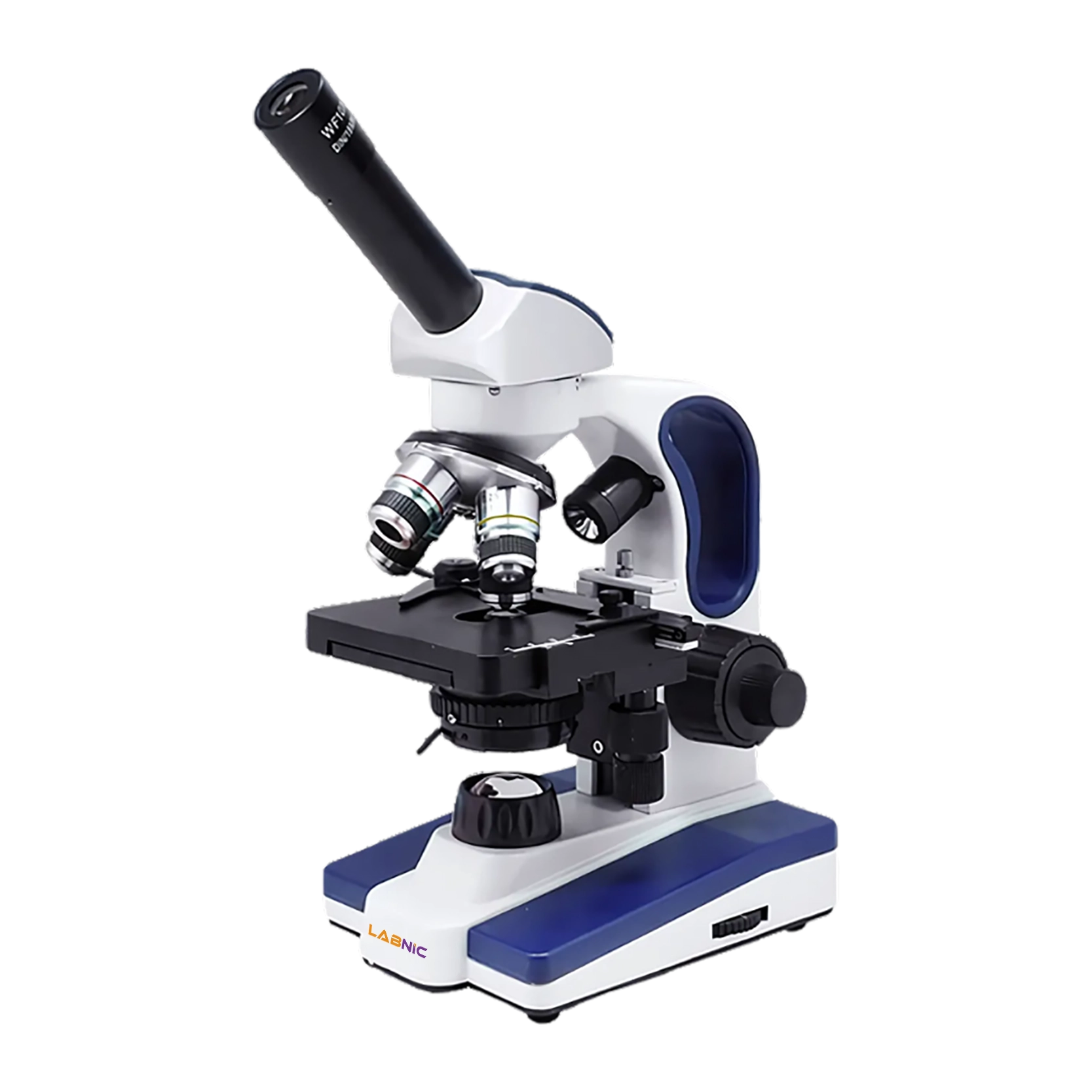
Biological Microscope LBN-BO132 consists of a monocular viewing head with a 45° incline and 360° of rotation. It features an achromatic optical system objective of 4x-100x in both spring and oil. An Abbe condenser is used with an iris diaphragm of aperture 1.25. It consists of dual LED illumination as a light source, and the brightness can be adjusted. It is ergonomically designed and user-friendly in nature. used in research analysis of samples at laboratories.
| Optical Type | Achromatic |
| Standard Magnification | 40×-100× |
| Head Type | Monocular |
| Head Inclination | 45 degree |
| Head Rotation | Head Rotate 360 degree |
| Eyepiece Diameter | 23.2mm |
| Eyepiece | WF10x2 pcs, 1 pc with pointer, both tube adjustable |
| Nosepiece | 4 holes, outward |
| Objective | Achromatic 4´, 10´, 40´ (s), 100´ (s, o) |
| Working Stage Type | 2 Layer Mechanical |
| Working Stage Size | 100 × 90mm |
| Working Moving Stage | 30 × 60mm (moving) |
| Focusing Type | Coarse Coaxial & Fine |
| Condenser | 1.25 N. A |
| Condenser Type | Abbe, Iris Diaphragm |
| Light Source | LED, brightness adjustable |
| Power Supply | AC110V-240V, cordless rechargeable |
| Transmit Light | 6V/20W |
| Weight | 4Kg/3Kg |
| Dimensions (L × D × H) | 310 × 210 × 420 mm |
Biological Microscope is used for research analysis of samples, tissue culture, cell examinations, at laboratories, medical institutes, scientific research institutes, health clinics, etc.
Biological Microscope is used for research analysis of samples, tissue culture, cell examinations, at laboratories, medical institutes, scientific research institutes, health clinics, etc.
Most Frequently Asked Questions
1. What is a Biological Microscope used for?
Ans. A biological microscope is used for observing biological specimens such as cells, tissues, and microorganisms. It is widely used in scientific research, medical diagnostics, and educational labs.
2. What kind of magnification do these microscopes provide?
Ans. They offer high magnification using optical lenses, which ensures clear and detailed visualization of microscopic samples.
3. Do these microscopes have adjustable lighting?
Ans. Yes, they come with adjustable illumination to provide consistent lighting, enhancing visibility during observation of transparent or low-contrast samples.
4. Is it easy to operate biological microscope?
Ans. Yes, these microscopes are designed for user-friendly operation, making them suitable for both beginners and professionals.
5. What types of specimens can be observed with this microscope?
Ans. You can observe a wide range of specimens including blood cells, bacteria, plant tissues, microorganisms, and slides of organs or tissues for research and diagnostic purposes.
Biological Microscope LBN-BO132 consists of a monocular viewing head with a 45° incline and 360° of rotation. It features an achromatic optical system objective of 4x-100x in both spring and oil. An Abbe condenser is used with an iris diaphragm of aperture 1.25. It consists of dual LED illumination as a light source, and the brightness can be adjusted. It is ergonomically designed and user-friendly in nature. used in research analysis of samples at laboratories.